Deborah J. Ross's Blog, page 42
January 29, 2021
Short Book Reviews: Romantic Fantasy or Romance with Fantasy Elements?
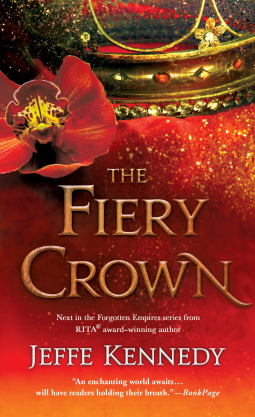
The Fiery Crown, by Jeffe Kennedy (St. Martin's)
This novel was listed as both sf/fantasy and romance. Such crossovers range from sf/fantasy with a love story to romance with a few fantasy elements. It all depends on the emphasis, where the energy and moving force in the story lie. That focus determines the reading experience, even with the same set of events. A novel can be driven by characters/relationships, by plot, by ideas (like mysteries), and even by the world itself. Romance may contain all of these elements but the heart of the story lies in the evolving, often tumultuous relationship between two people. The Fiery Crown is one of these. It’s set in a world with interesting magic and political conflicts, and various events, although the most dramatic don’t happen until three-quarters through the book. But the center of it is the love story between Conri and Lia, a prince-turned-slave-turned-king and the not-quite-human Queen of Flowers of the island nation of Calanthe, possessor of the Abiding Ring of prophecy. The Fiery Crown follows the story begun in The Orchid Throne, beginning with Conri and Lia married, very much in lust with one another but lacking the understanding that would allow them to work together against their mutual enemy, the mainland emperor, Anure. Over the course of this book, each makes progress in that direction, although whether it will be enough to overcome their separate habits of suspicion and stubborn independence in time to save Lia and Calanthe from Anure’s invasion is uncertain.
The Fiery Crown is the middle book of a trilogy, although it isn’t labeled as such. I didn’t realize it when I picked the book up. Indeed, it felt as if I were coming into the middle of a story. I didn’t find the characters and situations confusing, but I did have the sense that this was an interesting way to open a romance novel. Usually, these begin with the couple meeting, being attracted to one another, struggling through one misunderstanding after another, and finally surrendering to their mutual passion. Here, they’re already married and enjoying an enthusiastic sexual relationship, which seems to be the only point on which they are agreed.
I’d strongly suggest that the first book (The Orchid Throne) be read first, and that readers set their expectations to a long, slow, relationship development with not much action until the final quarter of the book, and an unresolved ending that must wait until the final volume. If slow-burn romance in a fantasy world is your thing, you’ll love this series.

January 25, 2021
Guest Blog: Tim Susman on Alternate History
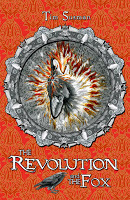
Today I'm delighted to present Tim Susman, whose queer furry alternate history novel, The Revolution and the Fox, released on January 15, 2021. Here are his thoughts on alternate history.
When writing alternate history stories, I think sometimes about Dean Koontz’s Lightning, in which a character uses time travel to prevent a horrible accident. But every time they stop it, it happens again in different circumstances at a different time, so they end up jumping around and preventing it over and over. “Destiny,” we are told, “struggles to reassert the pattern that was meant to be.”
Stephen King also personifies history in 11-22-63. The main character, traveling in time to attempt to prevent President Kennedy’s assassination, is told that he will be fighting “the past,” which “doesn’t want to be changed” (disclaimer: I have seen the mini-series but not read the book). Kennedy’s assassination is viewed as a lynchpin that will change history beyond its ability to “push back,” but the implication from both of these books is that it is very hard to change history (to be fair, these are more generally time travel books than alternate history books).
Most people who might believe in destiny would attribute that force to a guiding intelligence behind it, a religious belief. Absent that force, or at least the focused interest of that force, there is a temptation when writing alternate history to err too far in the other direction. The famously named “butterfly effect” encourages us to believe that a small change in one place can spawn massive changes around the world. It may be true that a single person making a different decision at a specific, important time can change the course of the world—one is reminded of Lieutenant Colonel Petrov, who may have prevented a nuclear exchange in the Soviet False Alarm incident of 1983—and events like those are prime fodder for alternate history writers. But when looking at larger world trends, movements built by dozens or hundreds of people, it is harder to divert them with a single decision, and the fictional force of “destiny” does not seem quite so strange to imagine. Rather than being a supernatural force, it is more obviously the result of the collective thinking of a group of people, dozens to thousands or more.
History is, at its core, the story of people. This seems like an obvious statement, but when most of us learn history in school, we learn names and dates and very little about the people behind those names. So when building an alternate history around a specific event, I research the people who shaped and were shaped by that event, and how they might have reacted had the event turned out differently. People are stubborn and tend to cling to their beliefs. So even if, say, the British Empire had access to sorcerers that helped them quell the 1776 rebellion before it properly got started, that wouldn’t change the minds of a generation of American colonists—or their children—who felt that their proper place was as an equal on the world stage.
Fortunately, at least in the last several hundred years, we have access to excellent records: letters written, notebooks kept, public speeches made. We can get at the character of the people in our historical era and get a better sense of how they would have reacted in different circumstances. Even going farther back, there are ways we can make guesses about the characters of people in power or near power at critical times.
Most of my reading when writing an alternate history consists of short biographies including those records. Knowing more about the side characters in my story fleshes them out and makes the world around my main characters more real. Knowing these other characters, I can extrapolate: how would John Adams, for example, have considered a non-human underclass of people? Well, he was a staunch abolitionist, but recognized the necessity of compromise with the slave states. Even though he was married to a firm supporter of women’s rights, he took few steps in that direction himself. We can extrapolate that he would have supported a non-human underclass’s rights, but might not have exerted himself any farther than editorials in the newspaper. Or perhaps, without the burden of government on his shoulders, the private individual John Adams would have been even more outspoken.
When I have a good feel for the people of a certain time, I feel comfortable adding my original characters to that mix. And then the alternate history can really begin to take shape. Because when we write an alternative to our own history, we are not only indulging in a fun game of “What if,” we are building a contrast to what actually happened. The differences—and the similarities—shine a light on human choices and how they affect the world, then and now. What if a person had made a different choice? What if a different person had made that choice? How many different choices, and where, would it take to significantly alter the course of events? What benefits or personal conflicts from hundreds of years ago shaped today’s world? What responsibilities do we, in turn, have to shape the world we are living in?
Destiny doesn’t struggle to reassert any pattern, because no pattern is “meant to be.” Destiny falls into repeating patterns because people fall into patterns, and destiny, history, and the past are all made by people.
Author Tim Susman started a novel in college and didn't finish one until almost twenty years later. In that time, he earned a degree in Zoology, worked with Jane Goodall, co-founded Sofawolf Press, and moved to California, where he lives with his two partners. He has attended Clarion in 2011 (arooo Narwolves!), published short stories in Apex, Lightspeed, and ROAR, among others, and recently concluded his award-winning Revolutionary War-era fantasy series "The Calatians" with the fourth installment, The Revolution and the Fox. He's won a Coyotl Award for his writing and another for his editing, three Leo Awards, and under the name Kyell Gold, he has published multiple novels and won several more awards for his furry fiction. You can find out more about his stories at timsusman.wordpress.com and www.kyellgold.com, and follow him on Twitter at @WriterFox.
Purchasing information for Tim's latest book, The Revolution and the Fox:
Amazon (US): https://www.amazon.com/Revolution-Fox-Calatians-Book/dp/1614505284/
Barnes & Noble: https://www.barnesandnoble.com/w/the-revolution-and-the-fox-tim-susman/1137536166?ean=9781614505280
IndieBound: https://www.indiebound.org/book/9781614505280
Powell's: https://www.powells.com/book/the-revolution-and-the-fox-9781614505280
Bookshop.org: https://bookshop.org/books/the-revolution-and-the-fox-calatians-book-4/9781614505280
Publisher's site: https://argyllproductions.com/product/the-revolution-and-the-fox-calatians-book-4/

January 22, 2021
Short Book Reviews: Gorgeous Asian Fantasy
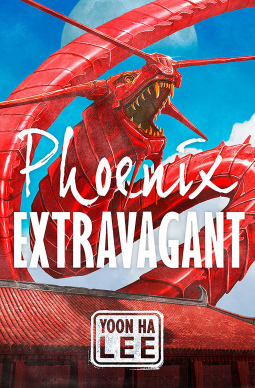 Phoenix Extravagant, by Yoon Ha Lee (Solaris)
Phoenix Extravagant, by Yoon Ha Lee (Solaris) I loved Lee’s Ninefox Gambit and Raven Stratagem, so I dove into Phoenix Extravagant in the hopes it would be just as good. I was wrong – it’s better! In a fantasy Korea-like land, newly conquered by fantasy-Japan, a young artist, Jebi, ekes out a living selling conventional mass-appeal paintings. An orphan, they live with their sister in an uneasy relationship. Okay, I was hooked. First, my own sister is an artist and I love the protagonist being a gifted painter longing to do original work instead of copying others. Second, how cool is it to have a nonbinary primary character in a world in which this is no big deal???
Back to the story: Jebi’s plan to better their (and their sister’s) conditions is to pass the exam for the Academy of Art. Much to their dismay, they aren’t admitted even though their work is perfect. They are subsequently recruited/drafted by the Ministry of Armor, the propaganda arm of the fantasy-Japan occupiers. Who have been extracting magical pigments from priceless original fantasy-Korean art (which involves total demolition of the pieces). Jebi reacts with horror to the destruction of his nation’s cultural heritage. The most rare and prized of these pigments is “Phoenix Extravagant,” vital for the mystical sigils used in controlling masks for automata – including a sentient, robotic dragon destined to be a war weapon. The dragon turns out to be a pacifist at heart, in no small part due to its no-harm programming.
What happens next, with all its twists and turns, is wildly inventive, full of heart and longing and magic. I adored Jebi and the woman duelist-prime, and most of all, the dragon. I can hardly wait for Lee’s next book!

January 15, 2021
Short Book Reviews: A Woman Pilot's Quest for Peace
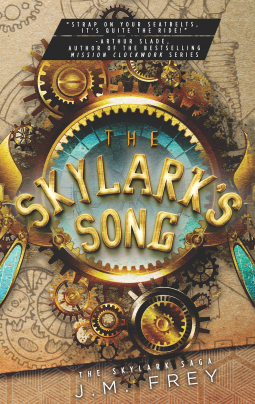
The Skylark's Song (The Skylark Saga, Book 1), by J.M. Frey (REUTS Publications) and The Skylark's Sacrifice (The Skylark Saga, Book 2), by J.M. Frey
These two are really a single story, broken into two. After a great social and environmental collapse, two neighboring nations endure decades of war fought mostly in the air. Gliders from Saskywa take on motorized Klonnish airships, while the populations in each descend further into poverty. This is especially true for the indentured Saskywan underclass, the formerly nomadic Sealies, who must often rely upon scavenging the wreckage of the past for survival (shades of children picking through rag heaps in today’s desperately poor countries).
Robin, a Sealie mid-flight mechanic, lives for her time in the skies, resisting at every turn the relentless pressures to conform and bend to the will of others, particularly men, and always the ruling Benne class. When a brilliant Klonnish pilot dubbed “The Coyote” shoots down her ship, she ends up, by dint of skill, bravery, and luck, being promoted to pilot. Thus begins a battle of strategy, skill, and courage, fought first in the skies, then through captivity and escape.
The brilliance of this two-part novel lies in the skill with which Frey layers and echoes themes. The first, obvious parallel is the resonance between the situation of the Sealies in Saskwya and that of women in Klonn, although the latter live in a gilded prison of silken gowns. The Sealies are pantheistic, the rituals of their faith woven into the fabric of their lives, while the Klonn consider themselves as superior atheists, devoted only to rationalism and the practice of the
Arts.
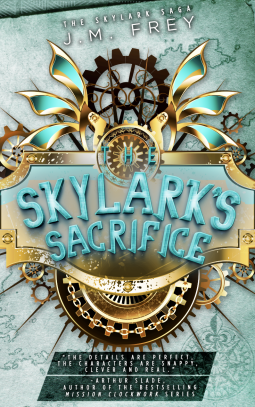 Robin is sick of taking orders and bowing to the expectations of others, whether it’s pressure to retire and marry, or become a “proper” Klonnish lady. She’s an exceptionally stubborn character, which is at times a bit exasperating, but is absolutely true to a world in which a woman of her talent and history must rely upon her own judgment and intuition above all else. Whenever pulled in different directions by the demands of duty, friendship, and love, she always manages to create her own solution moving forward.
Robin is sick of taking orders and bowing to the expectations of others, whether it’s pressure to retire and marry, or become a “proper” Klonnish lady. She’s an exceptionally stubborn character, which is at times a bit exasperating, but is absolutely true to a world in which a woman of her talent and history must rely upon her own judgment and intuition above all else. Whenever pulled in different directions by the demands of duty, friendship, and love, she always manages to create her own solution moving forward.

January 11, 2021
Tim Susman's The Revolution and the Fox: Book Release and Author Interview
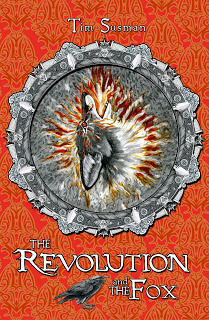
Today's Author Interview is with Tim Susman, who is celebrating the upcoming release of his queer furry alternate history, The Revolution and the Fox.
Deborah J. Ross: Tell us a little about yourself. How did you come to be a writer?
Tim Susman: I was encouraged to read by my parents, both English majors, and I read everything I could get my hands on. Eventually I found that I had stories in my head that I wanted to work out on paper, so I joined my college’s science fiction magazine and started writing short stories. After college, I kept on writing, and reached a point where I wanted to do more with it, so I took some writing workshop classes at our local university. I started writing novels, and when I got laid off from my tech job some years later, my husband encouraged me to write full time. I’ve been doing that for ten years now, and it is the best job I’ve ever had.
DJR: What inspired your book?
TS: This is the fourth (and final) book in a series inspired by the idea that coming-of-age stories play out in our lives at many different scales, that a country’s war of independence is a coming-of-age story, that a magical race created by a human sorcerer can, like any child, also have a coming-of-age story. The fourth book specifically grew out of two ideas: first, the idea that what a person or country does with their independence is as interesting as how they achieved it, and I wanted to explore that both for my protagonists and their new country; and second, that the magic system I’d built for the British Empire wouldn’t necessarily be the same system used all over the world. I wanted to explore other cultures and give the reader a sense of how different magic might be outside of Britain.
DJR: What authors have most influenced your writing? What about them do you find inspiring?
TS: Stephen King for his ability to create a mood. David Mitchell for his ability to find the perfect little details to describe a character, whether in narrative or in the character’s voice (also for his use of language and the craft in the endings of his books). Kazuo Ishiguro for the fragility of perception and memory (and also for his lovely characters). Susan Cooper’s Dark is Rising series and the way she brings real people to meet epic moments will always be in the back of my head, as will much of Madeleine L’Engle’s work for the same reason. For this series specifically I often thought back to Kevin O’Donnell, Jr.’s Flinger series (Caverns, Reefs, Lava, Cliffs) because he so ably portrayed a protagonist growing up with powers he needed to constantly build on in order to fight the forces arrayed against him for no logical reason other than an accident around his birth.
DJR: Why do you write what you do, and how does your work differ from others in your genre?
TS: I write furry fiction, meaning my stories usually have animal-people of some kind in them. I like that aesthetic and the idea that culturally we invest certain animals with certain traits; furry fiction is the logical extension of that. We think foxes are crafty; what if you had a whole group of fox-people who would be viewed as crafty? That’s the literary explanation, but it may be more of a justification after the fact of my having seen Disney’s Robin Hood at a young age and wanting desperately to live in that world.
I also write queer fiction because I think there needs to be more queer fiction, and also because I love to see the breadth of ways in which people find love and identity. I’m old enough to remember when I thought the world was divided into straight and gay, and to see people come forward year after year to show us how diverse the world is, and how blurred the distinctions are that we once thought so sharp, has been just a continuing source of joy.
As for what differs from others in my genre, I think what I try to bring to each of my works is a sense of optimism that everyone can find out their truest self and can express that. I hope that reading my books will give readers confidence that they too can find who they are and live their best lives.
DJR: How does your writing process work?
TS: Currently it goes something like this: I get an idea. It sits around in my head for anywhere from one to six months so I can see if it’s something I’m going to want to stick with. Eventually I’ll make a rough plot outline so I can figure out the beats and what the heck is going on, and get a better idea of the characters (usually the idea is centered around characters and the plot is what I have to work out). Then I’ll write the first draft all the way through—currently I use Scrivener for most projects but I do still occasionally use Word. The first draft sits for a period of time and then I go back through it to catch the inconsistencies and embarrassing mistakes that I don’t want to inflict on my beta readers. Then it goes to them, I have a round of critiques, and sometimes I’ll have a second round of beta readers after that, depending on the book (that’s how I did it with this one).
DJR: What have you written recently? What lies ahead?
TS: I write a lot of my furry fiction under the name Kyell Gold, and as Kyell I recently wrapped up another series called Love Match, a trilogy following a young jackal as he studies at a tennis academy and then enters the world of professional tennis while navigating gay relationships and other dramas.
Coming up next for Kyell is a return to a Renaissance-era world with a gay romance about making up for the mistakes of your youth, called Return to Divalia, and next for me is a fantasy story in a multi-cultural world about a thief who signs on to help a mysterious woman reclaim a kingdom that’s been stolen from her; by the time he figures out that she’s the evil queen from the old fairy tales he knows, he’s been turned into a weasel and needs her magic to get back to his human form.
DJR: What’s the strangest or most touching fan mail you’ve ever received?
TS: I have gotten a couple letters from people who have said that my books were an anchor for them when they felt suicidal, which is far beyond what I’d even imagined my stories might do for people. DJR: That's wonderful! Books can indeed change and save lives. I think the most moving fan mail I've gotten was a letter from a reader who used one of my books as a way of coming out to a parent.
DJR: What advice would you give an aspiring writer?
TS: Be stubborn but not unwilling to learn. Read as much as you can, write as much as you can, and—as much as this is possible—write for yourself, not for other people.
Amazon (US): https://www.amazon.com/Revolution-Fox-Calatians-Book/dp/1614505284/
Barnes & Noble: https://www.barnesandnoble.com/w/the-revolution-and-the-fox-tim-susman/1137536166?ean=9781614505280IndieBound: https://www.indiebound.org/book/9781614505280
Powell's: https://www.powells.com/book/the-revolution-and-the-fox-9781614505280
Bookshop.org: https://bookshop.org/books/the-revolution-and-the-fox-calatians-book-4/9781614505280
Publisher's site: https://argyllproductions.com/product/the-revolution-and-the-fox-calatians-book-4/
Tim Susman started a novel in college and didn't finish one until almost twenty years later. In that time, he earned a degree in Zoology, worked with Jane Goodall, co-founded Sofawolf Press, and moved to California, where he lives with his two partners. He has attended Clarion in 2011 (arooo Narwolves!), published short stories in Apex, Lightspeed, and ROAR, among others, and recently concluded his award-winning Revolutionary War-era fantasy series "The Calatians" with the fourth installment, The Revolution and the Fox. He's won a Coyotl Award for his writing and another for his editing, three Leo Awards, and under the name Kyell Gold, he has published multiple novels and won several more awards for his furry fiction. You can find out more about his stories at timsusman.wordpress.com and www.kyellgold.com, and follow him on Twitter at @WriterFox.

January 9, 2021
Jaydium Chapter 7 FREE on Curious Fictions
Chapter 7 of Jaydium is up on Curious Fictions. How many of you are reading along?

https://curiousfictions.com/stories/3...

January 8, 2021
Short Book Reviews: Jodi Picoult's Brilliant Take on Ancient Egypt, Death, and Choices
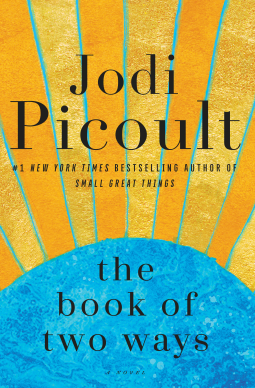
The Book of Two Ways, by Jodi Picoult (Ballantine)
Sitting down to review a new Jodi Picoult novel always catapults me into a state of awe. She’s a terrific writer who always envelops me in her story, and those stories are rich in layered textures, interwoven like brilliant tapestries. Her work is characterized by a deep, consistent trust in the discernment and judgment of her readers. She never bashes me over the head by telling me how to feel or what to think about any event, situation, or character. So here goes The Book of Two Ways According to Deborah:
The “Two Ways” in the title refers to many things: in Egyptology, a map depicting two paths a dead person may follow to find the afterlife, one by water, one by land. It also refers to “the road not taken,” the “might-have-beens” in any person’s life. How would things have been different if we had chosen one career over another, or committed ourselves to one first love instead of letting them go?
More importantly, what happens when the chosen life and the might-have-been collide in real life?
Dawn’s first and abiding passion in life was the study of Ancient Egypt, in particular a new interpretation of The Book of Two Wayspainted on the insides of mummy cases. She didn’t expect to also find human love with an equally obsessed, brilliant British archaeologist, Wyatt. But when her mother was dying, she left both career and lover to return to the US and a long, excruciating hospice vigil that she survived thanks to the gentle, loyal Brian, whom she eventually marries. She finds new meaning in her work as a death doula, supporting dying clients and their families through their transitions (and echoing the Egyptian practice of guiding the dead to their destination). Dawn’s daughter Meret becomes the shining star in her life. A near-fatal airplane crash fractures Dawn’s neatly assembled world and sends her back to Egypt, and Wyatt.
So much for the plot. First of all, the book itself isn’t linear in chronology, and a good part of it is layered, spiraling back to themes and situations previously touched on, each revisitation offering new insights.
Secondly, Egypt! Tombs! Mummies! Mysteries! Unearthing objects not seen in millennia! Just about every kid I knew was fascinated by Ancient Egypt at one time or another, me included, and Picoult presents the scholarly material and methods in her typical blend of passion and accessibility.
Thirdly, what does it all mean? Can we ever truly pick up the pieces of the lives we might have lived? How do we know if we want now what we wanted then, or have we ourselves changed so there is no going back?
Is it possible to love two people, each in different ways? How does any of us choose between love and the demands of an all-consuming vocation?
In the end, Picoult presents us with an ending that reflects as much what we as individual readers have experienced or longed for, as the text of the previous story.
As usual, highly recommended.

January 1, 2021
Short Book Reviews: A Gothic Horror in Mexico
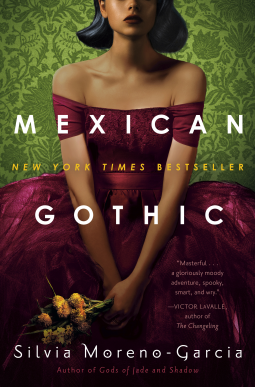
Mexican Gothic, by Silvia Moreno-Garcia (Del Rey)
Slowly building but gripping from the start, this Gothic horror tale set in 1950s Mexico is just the sort of brilliantly executed, engaging tale you’d expect from the author of Gods of Jade and Shadow. It’s gorgeous, sensual, and incredibly creepy, at times reminding me of all the tales and movies in which fungus is the agent of evil or at least creepiness. (Remember Brian Lumley’s story, “Fruiting Bodies”? Or Molly Tanzer’s more recent novel, Creatures of Want and Ruin?) Here Moreno-Garcia has given these elements and the trope of the sinister Gothic mansion her own flair and flavor.
Noemí Taboada ventures to a big, spooky mansion after her newly married cousin sends a desperate, if incoherent, message. We know, of course, that all is not as it appears to be in this realm of shabby British expatriate gentility. There’s the ancient, decaying, bed-ridden patriarch, the cousin’s charismatic but sadistically manipulative husband, the hyper-controlling aunt, and the pale, poetic nephew who draws beautiful sketches of fungi. But Noemí is no ordinary Gothic heroine, she’s a modern (well, 1950s modern) woman with scholarly aspirations, a talent for controlling social situations through flirtation, the ability to drive a car, and an impetuous fearlessness that gets her out of trouble as often as it gets her in. Yet even her forthrightness and independence are not enough to render her immune from the slow intoxication of the mansion, High Place, and its inhabitants. Fungal spores are in the air she breathes, the food she eats, even the wallpaper of her bedroom, and it’s only a matter of time before she succumbs.
From the breezy opening scenes to the slowly building creepiness to the utterly horrific page-turner climax, Mexican Gothic delivers on its promise. It held my imagination in its fungal-laced grip.
This award-worthy novel is definitely not for reading late at night if you intend to get any sleep!

December 25, 2020
Short Book Reviews: Black Women Take On The Demons of the Ku Klux Klan
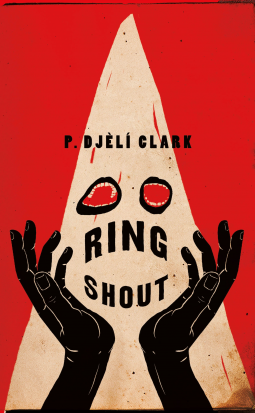
Ring Shout, by P. Djèlí Clark (Tordotcom)
This is the book that got me through the final days of the 2020 Presidential election.
It’s now 1922, and the Ku Klux Klan, fueled by a re-showing of The Birth of a Nation, is on the rise. The hatred and violence it encompasses has opened the doors to an even greater, supernatural evil that turns human members into demonic Ku Kluxes (imagine the peaked hood and eye holes conforming to the shape of the skull beneath). Will the menace spread to every corner of the land? All is not lost however, for four intrepid Black women have banded together to defeat it. Each has her own talents, whether skills gained as airwomen in World War I, or through the magic passed on from generations past. Although unique in personality, the bonds of sisterhood and shared purpose has welded them into an indomitable team.
This is the book that got me through the last days of the 2020 Presidential election. I’d turn away from the news, as full of fear and bigotry as it was of hope, and dive into the world of Ring Shout, where the loyalty and courage of Black women heroes stood fast against the forces of evil.
That gives me hope.

December 22, 2020
Blessing for the Longest Night
Blessing for the Longest Night
All throughout these months
as the shadows
have lengthened,
this blessing has been
gathering itself,
making ready,
preparing for
this night.
It has practiced
walking in the dark,
traveling with
its eyes closed,
feeling its way
by memory
by touch
by the pull of the moon
even as it wanes.
So believe me
when I tell you
this blessing will
reach you
even if you
have not light enough
to read it;
it will find you
even though you cannot
see it coming.
You will know
the moment of its
arriving
by your release
of the breath
you have held
so long;
a loosening
of the clenching
in your hands,
of the clutch
around your heart;
a thinning
of the darkness
that had drawn itself
around you.
This blessing
does not mean
to take the night away
but it knows
its hidden roads,
knows the resting spots
along the path,
knows what it means
to travel
in the company
of a friend.
So when
this blessing comes,
take its hand.
Get up.
Set out on the road
you cannot see.
This is the night
when you can trust
that any direction
you go,
you will be walking
toward the dawn.
—Jan Richardson
from The Cure for Sorrow: A Book of Blessings for Times of Grief
© Jan Richardson from The Cure for Sorrow: A Book of Blessings for Times of Grief. janrichardson.com




